Doctor’s Dental Hygiene Recommendations
People always ask me questions like: “What kind of tooth paste is the best?” “What is the best rinse?” “What toothbrush?, etc. I’m going to list a quick rundown of my typical response to these commonly asked questions.
First, if you take a walk down the typical Walgreens “tooth paste isle”, you’ll see what seems like a million different toothpastes. Each has its own bells and whistles; “Tartar control this…”, “Whiten your teeth that…” Some toothpastes are more expensive than others. I’ve found that if you look on the back of most of these toothpastes, you’ll see identical ingredients despite the bells and whistles that seemingly makes one more expensive than the other.
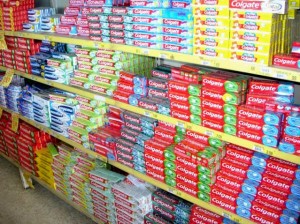
I’ll talk more about specific toothpaste brands later, but in the world of toothpastes, its my opinion that its a big advertising game. My advice is: buy the less expensive one. As long as it contains STANNOUS FLUORIDE, you’re good to go. Avoid toothpastes that don’t contain fluoride. Every so often, I’ll get a patient in the chair that is “anti-fluoride”. That person almost always has four cavities minimum.
Bacteria sit on teeth and consume the sugar you eat. The bi-product of the bacteria is acidic in nature. This acidic material erodes the tooth. This allows bacteria to burrow itself into the tooth creating a “cavity”. Bacteria hide in this “cavity” and burrow themselves deeper.
Fluoride is a beautiful thing. If bacteria comes in contact with fluoride, (ie. when the “burrow hole” is still shallow enough to be fluoride accessible), fluoride is then ingested by the bacteria. This destroys their digestive system and kills them.
Also, I call fluoride the “double whammy” because it not only kills bacteria, but it will actually “recalcify” enamel. Yes, the ads are correct in saying toothpaste can “build enamel”. Without getting too technical, the fluoride molecule is actually incorporated back into the enamel chemical structure, thus making it bigger/thicker/denser.
In many cases, when I find “cavities” on a patient small enough so that the bacteria has not yet penetrated through the enamel layer (the under layer is called dentin), I can often resolve the cavity with a fluoride regimen and hygiene instructions. This means avoiding the “filling”!! Since fluoride kills bacteria and recalcifies enamel, then this allows me to “fix” cavites without ever picking up a drill. I consider myself a conservative dentist and it’s nice to avoid drilling into a tooth if not necessary.
This brings me to the question, “What is my fluoride regimen?”
Let me start by explaining what I am doing at every 6 month recall. The reason we do a 6 month recall is three fold. One is to check for periodontal pockets and periodontal disease (see the perio section in the website). Next, is to check all soft tissue (in the mouth and out of the mouth) for any abnormal findings (ie. cancer). And, lastly, to check all the nooks and crannies on the teeth for “cavities”.
There are two parts to this cavity inspection. The first part is actually looking at the teeth directly and feeling for cavities. I use a sharp-ended “pointy” instrument called an explorer to poke into every nook and cranny possible looking for soft spots or “sticks” into enamel. This indicates bacterial decalcification. The second part of a cavity inspection is radiographic. The reason you take “bite-wing” x-rays every year is to look BETWEEN the teeth for cavities. I’m talking about that single point of contact where floss snaps. This is the area you can’t see on an intra-oral inspection and is a VERY COMMON area where people get cavities.
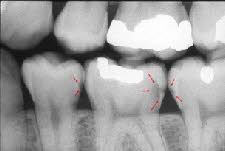
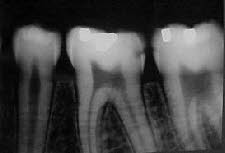
Finally, this brings me to my fluoride regimen. Its all about getting fluoride into all the nooks and crannies and keeping it there (ie. not washing it off…) I’ll start with basic hygiene instructions.
Its best to brush your teeth WITH A FLUORIDATED TOOTHPASTE three times a day:
1. when you get up (preferably after breakfast)
2. after lunch and
3. right before you go to bed (after dinner). The idea is you don’t give the bacteria the chance to eat the sugar you ate. If you didn’t eat any sugar, then that’s great, but chances are you had some carbs somewhere.
Next, its about HOW you brush. Manual brushing is good if you’re diligent and avoid the “jackhammer” syndrome. Too many people grind furiously back and fourth in a straight motion thinking they’re doing a great job cleaning their teeth. What they’re really doing is abrading away good protective enamel and exposing the cavity prone soft dentin below. They are essentially doing the bacteria’s work for them.
I always tell people to use a soft brush and move in circles or random motion. The best, in my opinion, are the electric toothbrushes. My favorite is the Sonicare. These not only vibrate in random motions to avoid abrasion, but they vibrate fluoride into all the nooks and crannies which would be otherwise inaccessible to “side to side” manual brushing.
As for that area BETWEEN the teeth where cavities commonly form, its very important the ORDER in which you brush, rinse, etc. For people who get cavities despite diligent brushing…. and ESPECIALLY for those who commonly get cavities between the teeth, this information might be valuable:
In an ideal world, this is how I would go through the ritual of brushing my teeth.
FIRST, use what ever rinse you like. (They’re all comparable. The alcohol based Listerine work great. Plax (shown below) is another good “alcohol based” rinse that also claims other ingredients help “loosen up plaque before brushing.” Don’t know if I buy this, but you can’t go wrong with the effects of alcohol on bugs.

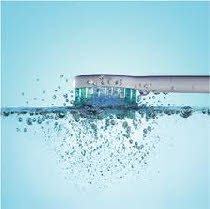
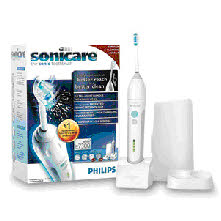
Hydrogen peroxides are tried and true. “Listerine Whitening” is a good example (shown below). I personally use this one because I like the double effect of hydrogen peroxide in doing both bug killing and teeth whitening at the same time. I also perform a lot of surgery in my practice and the hydrogen peroxide effects don’t irritate ulcerated tissue like alcohol. Hydrogen peroxide is a better option if you have a cut, ulcer, or any type of broken tissue lesion in the mouth.
50/50 water dilution of cheapo hydrogen peroxide is just as good as the brand names.
You can’t go wrong with warm salt water as well…
Keep in mind, unless there’s Fluoride in the rinse, then you’re mostly targeting the Periodontal (gum) bugs and not the teeth bugs. You can check the back of the bottle, but most of the rinses that actually contain fluoride (ie. Listerine Total Care and ACT) are so diluted (compared to toothpaste) that you might as well use the less expensive non-fluoride containing rinses first and proceed to brush your teeth with flouride toothpaste AFTER rinsing. I think the reason for the dilution is FDA regulations and fear of toxicity…
SECOND, brush with a fluoridated toothpaste using a random vibrating electric toothbrush. My favorite toothpaste is Crest Pro-Health. Without getting too technical, it simply has the best rap sheet in all the dental studies I recently attended the annual AzDA Dental Convention and took a 4 hour course on “over the counter” dental products. Crest Pro-Health seemed to be the front runner.
I actually like the baking soda tooth pastes for a specific reason. Their abrasiveness removes stain quite well. This is key for the coffee drinkers, red wine drinkers, and smokers. A nice trick is to mix hydrogen peroxide with baking soda toothpaste in a nice slurry. Then use a Sonicare or rotary electric toothbrush to remove stain. Works great! I wouldn’t use the Baking soda toothpastes every day for fear of tooth abrasion, but their ok once in a while for stain removal.
My favorite toothbrush is the Sonicare for reasons mentioned above. The Sonicare is set up to beep every 30 seconds per quadrant of the face. It makes you brush for 2 minutes which seems like a REALLY LONG time, but if you can stick it out then you’re good!
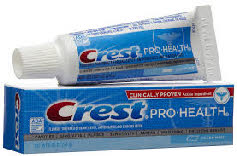







THIRD, spit the bulk of the toothpaste out but DON’T RINSE (you should have already rinsed!). Everyone rinses after they brush. This makes no sense. The fluoride needs time to do its job. If you rinse it all off, then its almost like you never brushed. If this sounds gross to you and you feel like you need to rinse out all the plaque you just brushed off, then rinse…. but, reapply toothpaste to the teeth with either a brush or your finger.
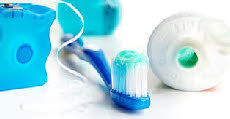
LAST, with a film of toothpaste still on the teeth, FLOSS the toothpaste into that contact point between the teeth.
For reasons mentioned above, this an extremely important step in preventing those pesky “in between the teeth” cavities. I see floss as simply a vehicle to get toothpaste between the teeth and get out any plaque between the teeth. After, flossing, you’re done… Go! No Rinse!!! Don’t eat or drink 30 minutes after you brush!! This doesn’t only apply when you were a kid getting fluoride treatments. This applies EVERY DAY!!!
For patients who continue to get cavities despite the above regimen, I will very often write a prescription fluoride toothpaste, most commonly “Prevident 5000”. There is nothing special about prescription toothpastes other than, at 5000 parts per million, they have a much higher concentration of fluoride than normal toothpastes. The prescription is required because the FDA doesn’t want kids doing shots of this stuff causing fluoride toxicity.
Another common fluoride prescribed is Gel Kam, which is similar to the Prevident but in Gel Form and is good for Fluoride trays. We will sometimes tell patients to alternate Prevident and Gel Kam. Its all Fluoride, but the different viscosities sometimes helps getting different bugs. (I believe they may have recently made Gel Kam over the counter….)
For patients, who STILL get cavities despite all of the above, I mentioned Fluoride Tray. This is a clear plastic sheath pulled over the teeth which hold Fluoride on the teeth for longer periods of time. This is similar to an Invisalign Tray or Bleaching Tray, or even some types of night guards. In fact, you could probably use any of the above as Fluoride trays.


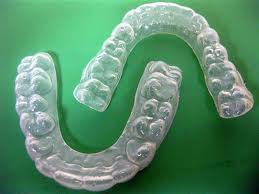
Overall, Fluoride is the key. You get it on the teeth, keep it there, and you’re good to go.
